Brookelyn Muir
Where do you live: Auckland, New Zealand
Describe your art in three words: Raw · Immersive · Expressive
Your discipline: Charcoal, painting and printmaking
Can you tell us about the moment you first realised art was your way to express emotions and connect with people?
High school was full of the stretch marks of growing up. Friendships were shifting, I was living away from home at boarding school, and there were always so many emotions swirling around that I didn’t know what to do with. I had a habit of bottling things up until they spilled over. When I felt completely overwhelmed, I tried going to the school counsellor a couple of times. But the words never came out the way I wanted, and the sessions never really gave me the release I needed. So I’d shrug it off, head back to the boarding house, put my headphones on, and sit down with whatever project I was working on in art class.
In hindsight, I realise that art was the only place where I felt safe enough to pour out what I couldn’t express. It gave me a language that words never quite managed. It’s cliché to say, but art became my therapy. I wasn’t just drawing or painting; I was untangling my own emotions on paper, finding a way to process them without needing to explain them to anyone.
That hasn’t changed. Even now, instead of journaling in the mornings about how I feel, I make art in the evenings. It’s become a rhythm in my life, almost a ritual. And the headphones are just as important as the pencil; music tunes out the noise of the world and helps me sink into that private space where my emotions can finally breathe.
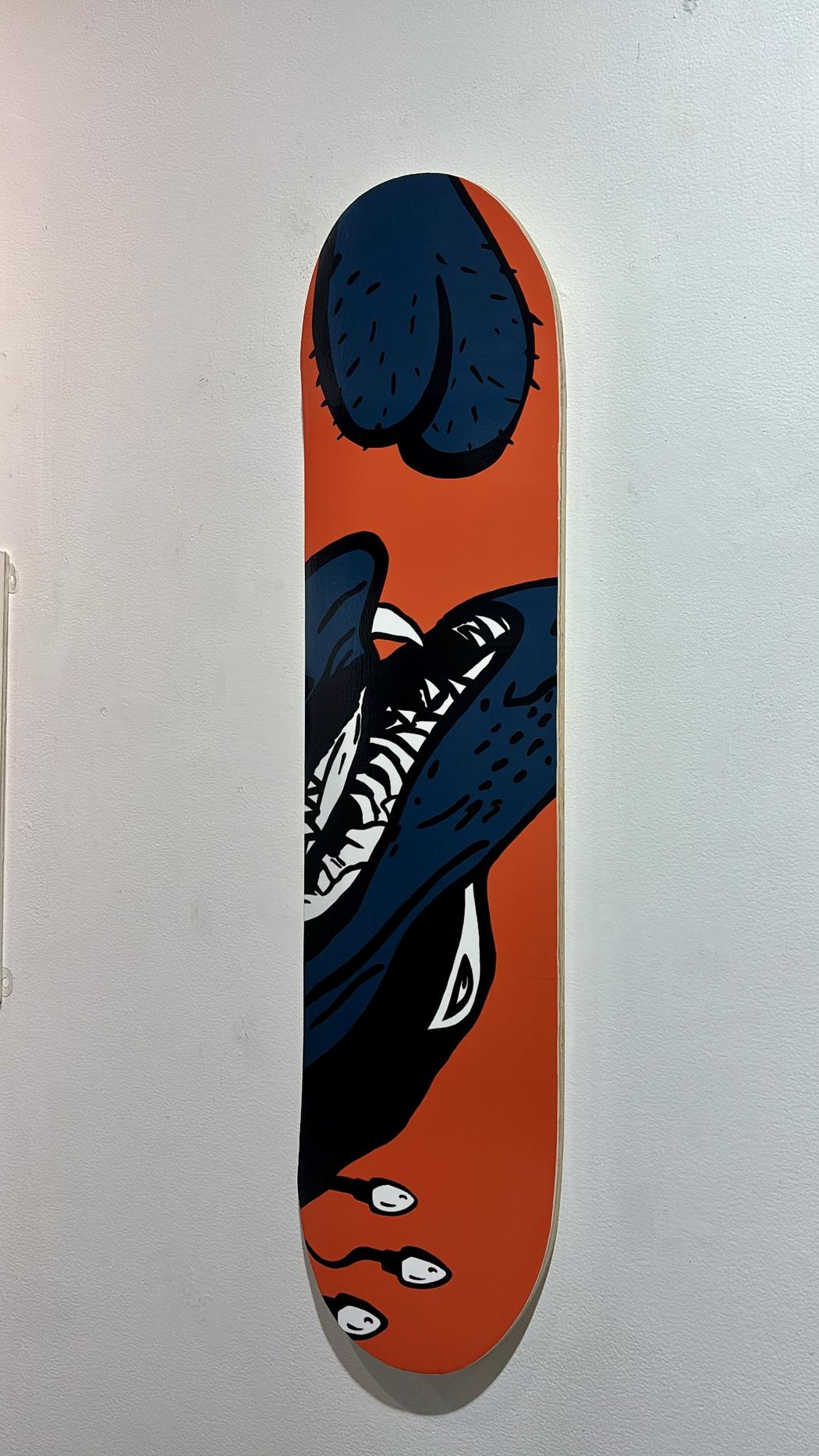 Brookelyn Muir | Bite
Brookelyn Muir | Bite
How does your New Zealand environment influence your creative process and the energy of your works?
I grew up on a farm, surrounded by a beautiful rural landscape. My childhood was gumboots, motorbikes, and swimming in lakes instead of pools. Later, I went to boarding school in the city. I learned to embrace living in opposite environments, but I also realised that it was never really about where I was. What mattered most were the connections around me.
At home, I’d see my dad in the mornings coming back from milking, covered in dirt and sweat. It was humble work, honest. Then I’d return to school, where conversations between certain people felt more like performances, where even something as simple as what drink bottle someone used could carry weight. The contrast was stark.
I think that’s when I started craving honesty. Rawness. Authenticity. I didn’t always find it in the people around me, so I began to look for it elsewhere. And without realising it, that craving shaped the way I approached art. I became interested in capturing the parts of life that aren’t polished or posed, the parts that feel real and unfiltered. My environment, in all its extremes, gave me that lens, it taught me to search for truth and to express it in a way that felt genuine.
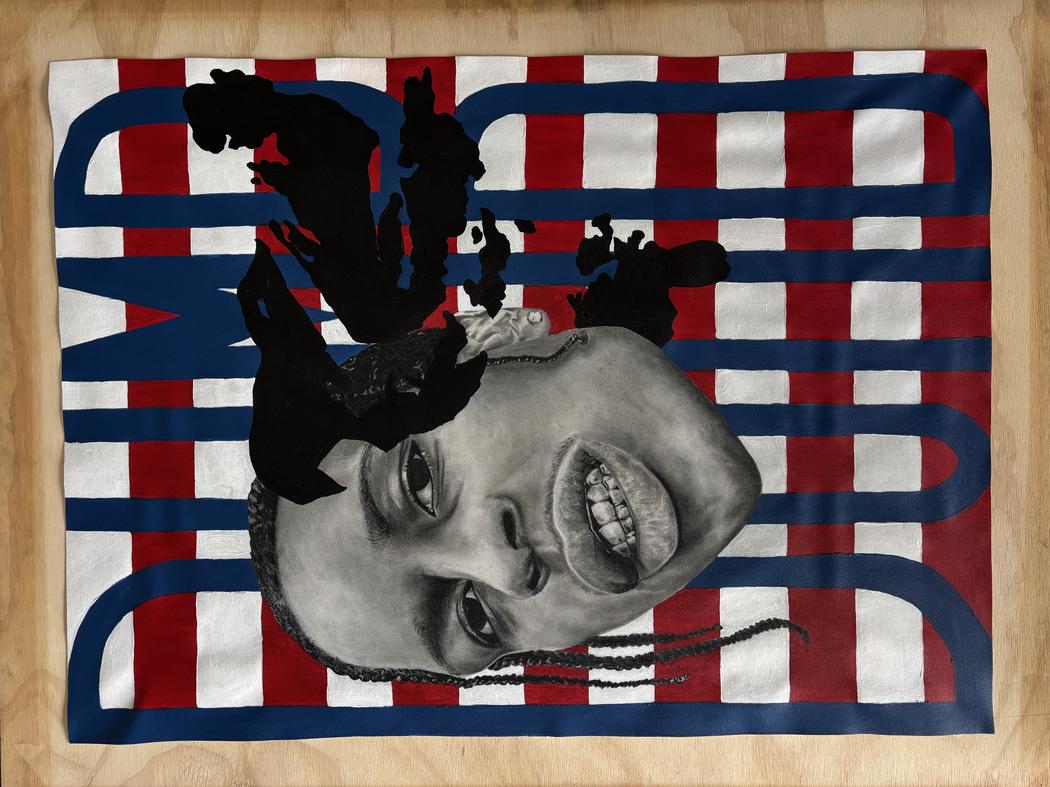 Brookelyn Muir | Dont Be Dumb
Brookelyn Muir | Dont Be Dumb
Your art captures “raw, unfiltered human expression.” What draws you to such loud and vulnerable emotions?
What draws me to those loud and vulnerable emotions is love. All kinds of love; platonic love, romantic love, self-love, a love of life, of opportunity, of connection. Love is the most honest force I know. It strips away the performance and the armour we carry; it pulls back the layers until only truth remains.
That’s what I want to capture in my work. That feeling of being completely free, unguarded, and raw. To me, love isn’t always soft or delicate. It can be messy, overwhelming, and loud, but it’s always real. And that’s what excites me. My art is my way of holding up a mirror to those moments, translating that energy into something visual. In a way, I’m always trying to draw love itself, in all the ways it shows up.
Music and self-expression are key themes for you. Could you share a specific song or musical moment that has shaped a recent piece?
A$AP Rocky, especially his album AT.LONG.LAST.A$AP, has had a big influence on a recent piece of mine. His music reflects the environment he grew up in, but also connects to bigger cultural ideas. And even though I’m all the way in New Zealand, with a quick swipe we’re linked to events happening thousands of miles away.
I’ve also started experimenting with typography again, inspired by Rocky’s use of text in album art and lyrics. The rumored title of his next album, Don’t Be Dumb, really stuck with me. It’s playful but also a challenge, and I like the way it leaves room for interpretation.
Because of recent developments in America, I’ve found myself unconsciously surrounded by the American flag. To me, it feels like it holds two sides, unity but also division. Seeing it in protests, rallies, even fashion, made me want to explore that tension in my own work. I’m not trying to make direct political art, but I am interested in how those things ripple outwards and influence the way we think about freedom, identity, and honesty.
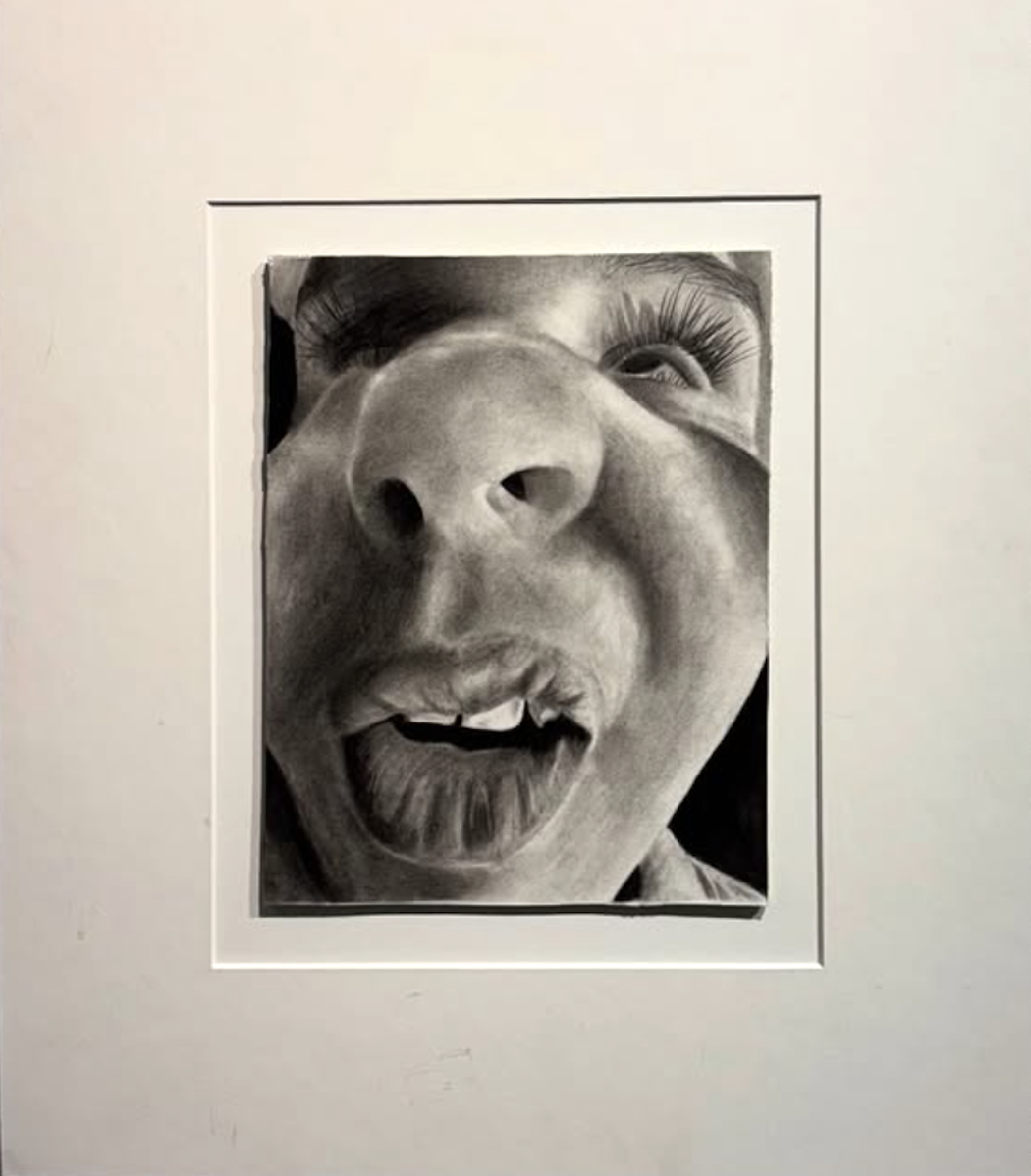 Brookelyn Muir | Jawn
Brookelyn Muir | Jawn
Many of your works combine drawing, digital illustration, and mixed media. How do you decide which medium to use for each idea?
It usually starts with the idea itself; the feeling or concept I want to get across. Some emotions feel more immediate or raw, and that comes out best through drawing. Other ideas need more layering, manipulation, or effects that I can only achieve through digital tools, like text, collage, or colour shifts.
For me, the medium always serves the feeling, not just the visuals.
What is it like to translate emotions like joy, defiance, or absurdity into bold graphic forms?
It’s just fun, honestly. I think we get so wound up in life. Sometimes it’s just about a work having the ability to break through the routine; not only for myself, but for the viewer too. To see something bold in its unconventionality.
A negative point of view I’ve noticed is the reaction: “Oh, that’s not very flattering, why would someone draw something like that?” But that’s exactly the point. It’s honest.
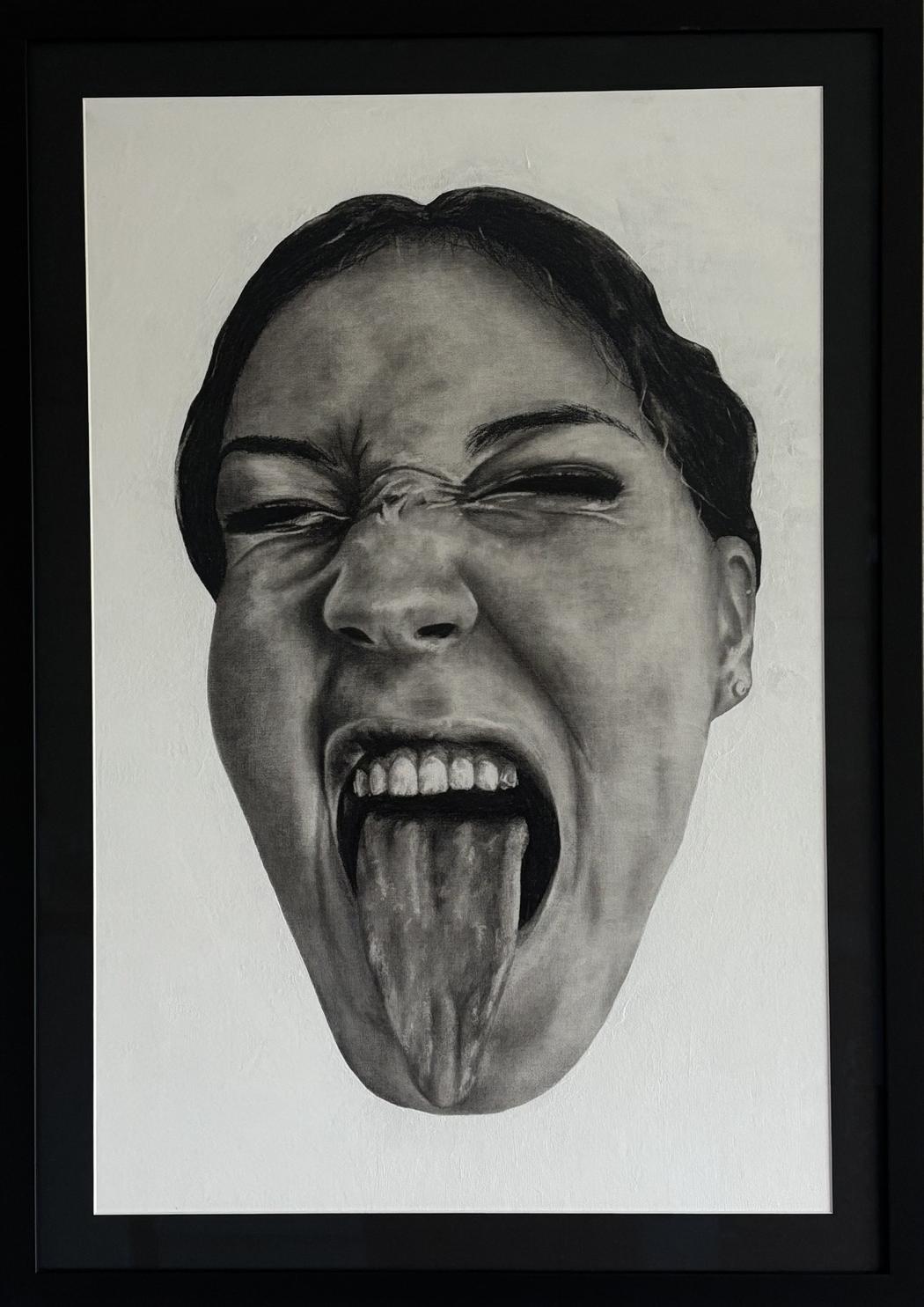 Brookelyn Muir | No 74
Brookelyn Muir | No 74
You also paint on unconventional surfaces, like skateboards. What excites you about bringing art into everyday objects?
It’s about exploring the bounds of edges. When I’m exploring certain themes, sticking to a canvas doesn’t always feel right, sometimes it just doesn’t fit. Finding objects that enhance the idea helps me bring my point of view across, while also developing the energy of the work and challenging the viewer in new ways.

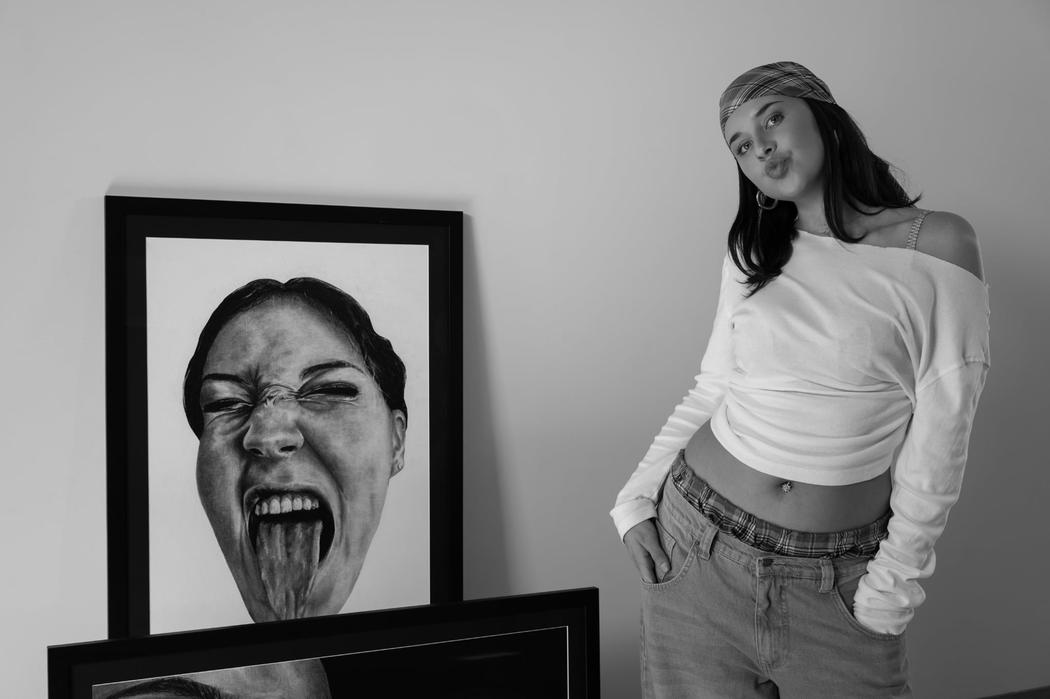
Leave a Reply